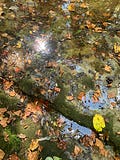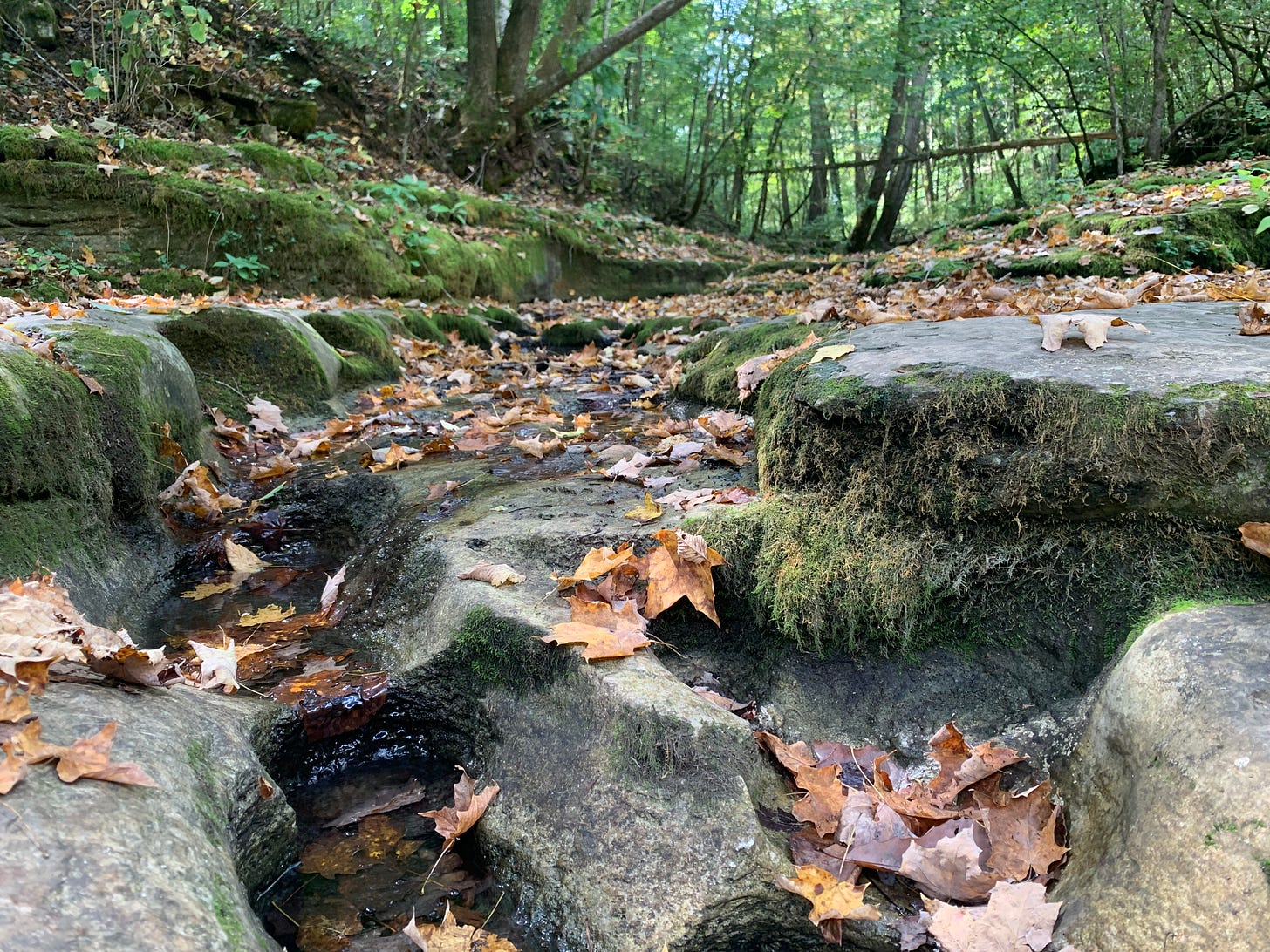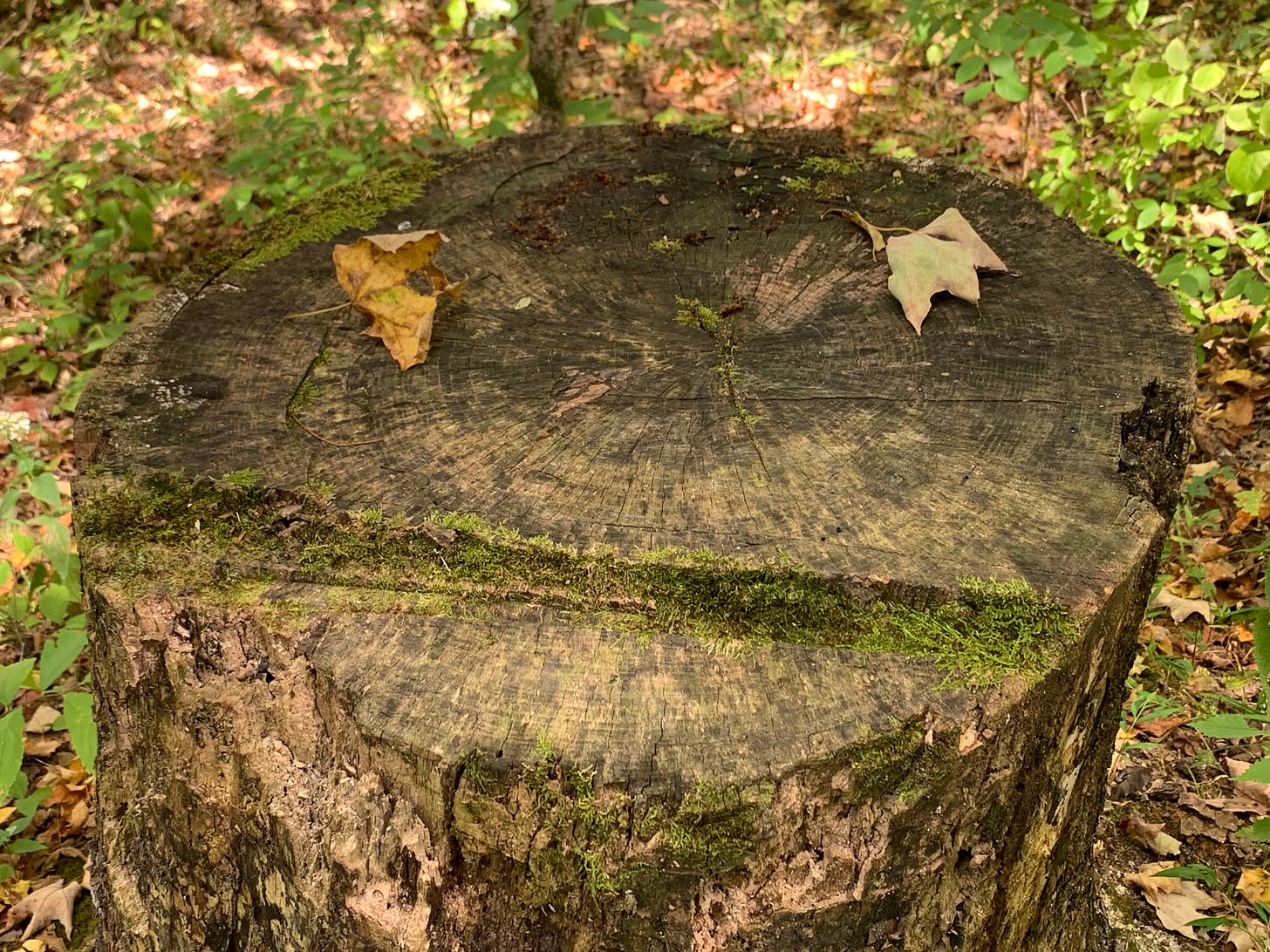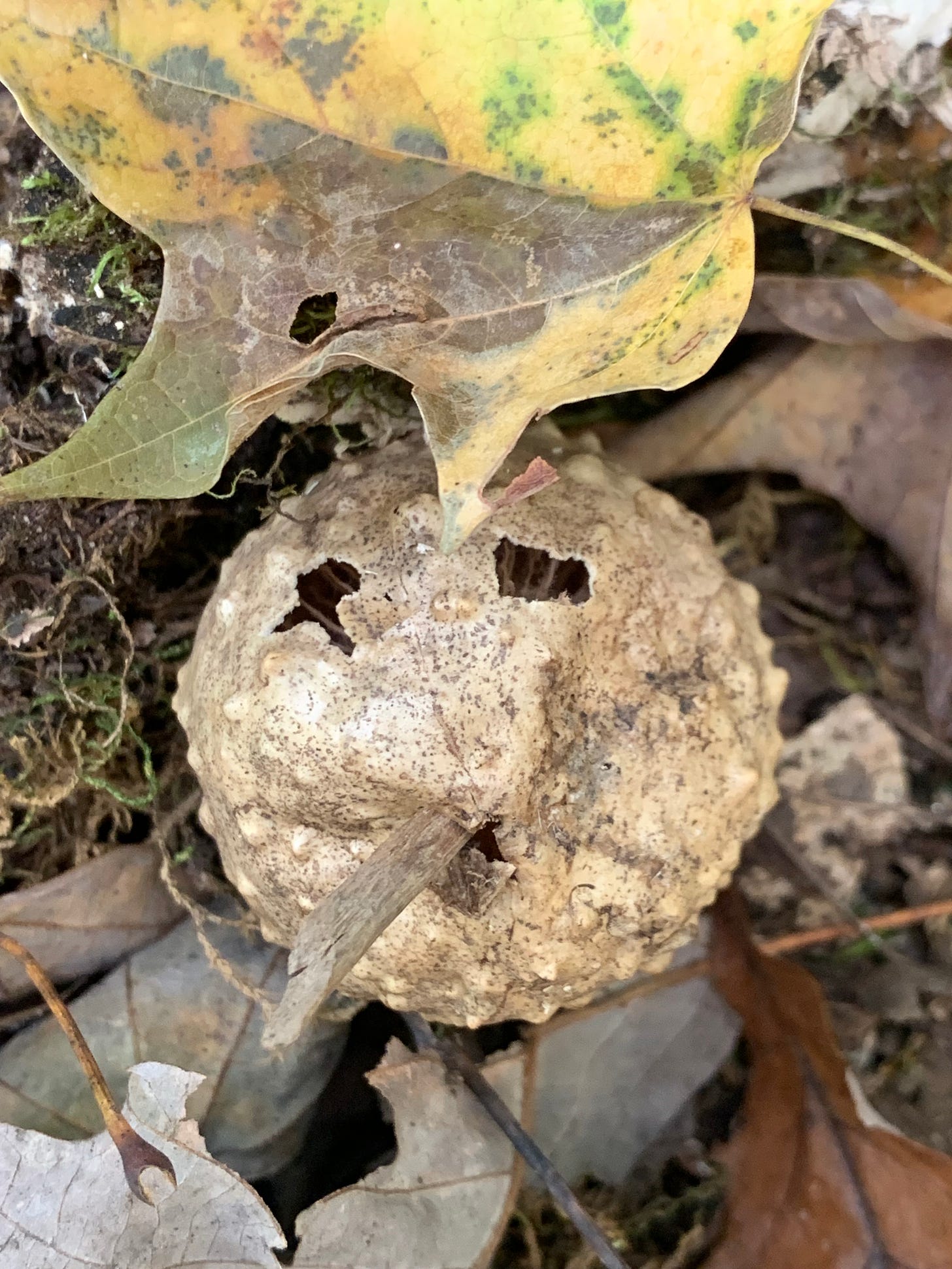Incantation
Goldenrod,
wingstem,
mistflower,
boneset—
I toss consonants
to a cauldron of air.
Here, something is always bubbling,
rising up to lick the surface
or diving down to savor the dark.
Green brains concuss the ground.
I am alone but see my children,
stumpy-armed and throwing
hedge apple offerings to air.
I have walked this trail too many
times to see it without the
slant of memory.
Water is a memory today,
in its place, currents of air.
I see a woman in the glade,
round bellied at the
edge of a puddle. She says she hopes
the baby will wait.
I see my brother on the same ledge,
how he leapt in the pool,
deep enough then
to swallow him whole.
The air churns.
Leaves fall like footsteps,
coming ever closer.
I stand still
amidst the falling,
feel my body lift. I taste
stillness.
This is what I came here for—
to remember
what is real. What’s often a creek deep enough to swim in is just a series of puddles right now.
You meet strange friends when you linger in the woods.
I gave this friend a cigar.
The Prompt
To know the name of a thing is not the same as to know the thing itself. In some sense, naming is an impediment to knowing. Once I snap a picture of the golden, droopy-pedaled flower, plug it into iNaturalist, and learn the name “wingstem,” do I imagine that my learning is done? What do I even know of the flower by knowing its name? Do I assume that all wingstems are the same, brushing over and past them with the broad stroke of language? Do I absolve myself of seeing more? Do I hold the word as invocation—or as benediction?
I think the truth is that when I learn the name of a plant, I hold the word in both of these ways. Knowing a name invites me into a certain kind of seeing—awareness of patterns and relationships. Once I have the word for black-eyed Susan and the word for milkweed, I become more aware of how they cluster together in the damp patches at the bottom of hills. When I have the words for wildflowers, I’m more apt to remember the order of their succession or to notice that this year there is more chicory, whereas last year, there was more Queen Anne’s Lace. But I am probably less likely, once I know a name, to stop and marvel at a flower, taking my time as I absorb it in intricate detail.
Naming both opens and closes doors. It doesn’t lock them, though. When we know the name of a thing, we can still choose to investigate further. We can still choose to see the individual tree within the named forest or the individual tree among a named species.
If you would like a prompt to play with, then I invite you to look around you and find a few things or beings whose names you do not know. They could be plants, trees, birds, or refrigerator parts. They could be rarely used tools rusting in your garage. Or hey, it could even be a neighbor with whom you’ve exchanged a nod or two but no in-depth conversation.
If you had to choose a name for this being or thing, what would you call them, and why? What do you notice about them that inspires this name?
Find out the name of the thing or being in question. Roll it around on your tongue. Mutter it like an incantation, if you want, and notice what it conjures. How do you see the being or thing differently now that you know their/its name? In what ways does your perception feel expanded? In what ways does it feel compressed?
If you’re trying this exercise with a sentient being who has no say in what name humans call them by (like poor, dear Wingstem), you might get a little woo, and ask them how they feel about that name. Ask them how they feel about naming in general. Let your whole body listen for the answer. If you get the sense that your new friend likes the convention of naming but not the particular name chosen for them, what sort of name might they prefer?
Let your heart be wide open here, friends. Let your imagination run wild. And then sit with the whole of the experience—the choosing of particular beings/things, the observation of them, the guesses about their names, the learning of their names, the impact on your perception, and anything else that follows from there (including the thoughts, feelings, sensations, and memories that come up in this process).
Somewhere in all of that swirl, there is a poem. Immerse yourself in the swirl. Feel the poetry of your own experience. When you’re ready, name it, which is to say, put it into words. As always, I look forward to reading what you share, and I’m so grateful that you’re on this flying-by-the-seat-of-our-pants creative journey with me!








Looks like a little bunny
but doesn't hop like one.
Skittering up a tree
was the giveaway.
We call him "Stumpy".
Or maybe it's a her.
The squirrel with no tail
that loves to eat pumpkins
from the inside out
starts to get very excited
this time of every year.
This is a beautiful poem and fun prompt! As luck would have it, I met a new-to-me flower that got a mention in your post, common chicory.
.
She introduces herself as fairywinkle --
as if I’ve found her in an alpine meadow,
her flowers small bits of amethyst
winking out of the green,
her stems tender, rippled
by any breeze off the mountain,
her nectar a kind of magic
for the prayerful.
.
In real life she is a roadside sign-twirler,
stout and splayed, her blooms
high-stepping up stubborn stalks
stumped off by deer.
She is still food in September --
far from ephemeral,
far from special,
.
but for the portal contained
in that lavender-blue.